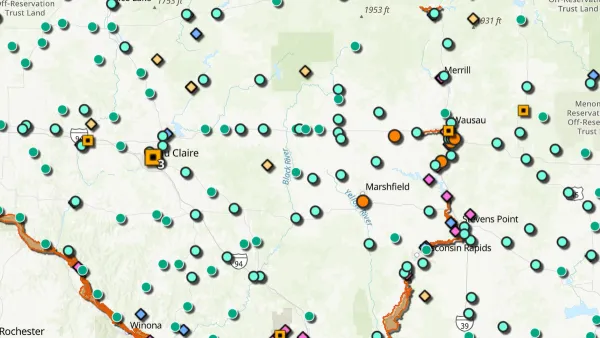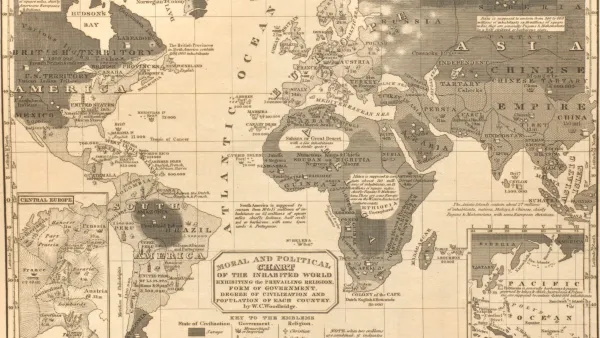The WikiLeaks release revealed the locations of a set of infrastructural sites operated by the United States all across the world. This piece from Domus looks at the geographical and geopolitical implications of this network.
Written by Geoff Manaugh of BLDGBLOG, the article explores how the release of this data is both revealing of the vulnerability of this network and also of the hidden extent of the U.S.' global reach.
"That is what made the controversial release by WikiLeaks, in December 2010, of a long list of key infrastructural sites deemed vital to the national security of the United States so interesting. The geographic constellation upon which the United States depends was suddenly laid bare, given names and locations, and exposed for all to see.
The particular diplomatic cable in question, originally sent by Secretary of State Hillary Clinton to all overseas embassies in February 2009 and marked for eventual declassification only in January 2019, describes what it calls "critical foreign dependencies (critical infrastructure and key resources located abroad)". These "critical dependencies" are divided into 18 sectors, including energy, agriculture, banking and finance, drinking water and water treatment systems, public health, nuclear reactors and "critical manufacturing." All of these locations, objects or services, the cable explains, "if destroyed, disrupted or exploited, would likely have an immediate and deleterious effect on the United States". Indeed, there is no back up: several sites are highlighted as "irreplaceable"."
FULL STORY: Open Source Design 02: WikiLeaks Guide/Critical Infrastructure

Analysis: Cybertruck Fatality Rate Far Exceeds That of Ford Pinto
The Tesla Cybertruck was recalled seven times last year.

National Parks Layoffs Will Cause Communities to Lose Billions
Thousands of essential park workers were laid off this week, just before the busy spring break season.

Retro-silient?: America’s First “Eco-burb,” The Woodlands Turns 50
A master-planned community north of Houston offers lessons on green infrastructure and resilient design, but falls short of its founder’s lofty affordability and walkability goals.

Test News Post 1
This is a summary

Analysis: Cybertruck Fatality Rate Far Exceeds That of Ford Pinto
The Tesla Cybertruck was recalled seven times last year.

Test News Headline 46
Test for the image on the front page.
Urban Design for Planners 1: Software Tools
This six-course series explores essential urban design concepts using open source software and equips planners with the tools they need to participate fully in the urban design process.
Planning for Universal Design
Learn the tools for implementing Universal Design in planning regulations.
EMC Planning Group, Inc.
Planetizen
Planetizen
Mpact (formerly Rail~Volution)
Great Falls Development Authority, Inc.
HUDs Office of Policy Development and Research
NYU Wagner Graduate School of Public Service




























